2 Classic CUBAN Posters for movie MISSING CHILDREN + Salute to CUBA Artist BACHS
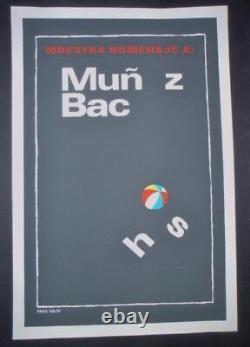
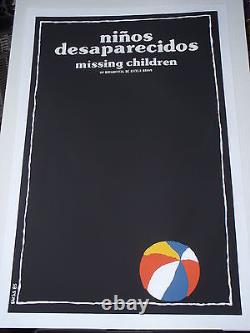
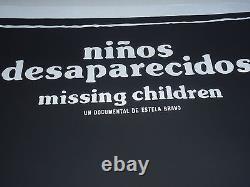
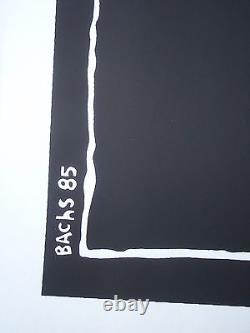
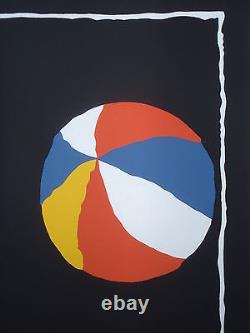
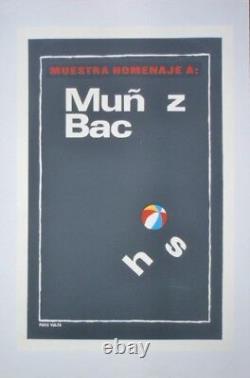
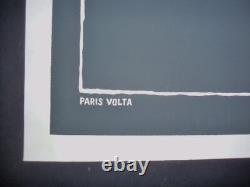
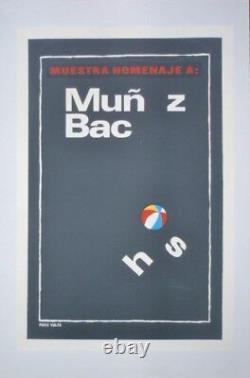

Is offering a huge selection of handmade Cuban silk-screen movie posters, many of which work beautifully well together. To view all of the posters, please visit our.
We also invite you to visit -- and "like" -- the Cuban Poster Gallery's Facebook Page. The Cuban Poster Gallery appreciates your business! Here we are offering two hard-to-find Cuban silk-screen posters. The first poster was designed for the 1985 Cuban documentary.
The movie, directed by award-winning U. Filmmaker Estela Bravo, focuses on the missing children of Argentina, where hundreds of children disappeared while a military dictatorship ruled the country from 1976 to 1983. The striking MISSING CHILDREN silk-screen was designed in 1985 by Cuban graphics art master Eduardo Muñoz Bachs, whose artwork can be found in prestigious collections worldwide, including the Academy of Motion Picture Arts and Sciences' in Los Angeles and the Victoria and Albert Museum's in London. Bachs' highly effective image of a child's multi-colored ball placed in the corner of a black field makes this one of the most famous of Cuban movie posters. The second, even rarer Cuban silk-screen poster, titled Muestra homenaje a Muñoz Bachs (Show Homage to Muñoz Bachs) , was designed in 2001 as a tribute to Bachs after his death that year. The designer of this tribute poster, which pays homage to Bachs' famous M ISSING CHILDREN poster, was a young Cuban artist named PARIS VOLTA , who died two years after Bachs at the age of 30.Volta gained fame in the 1990s as a designer of posters for Havana's prestigious New Latin American Film Festival. The Homage to Muñoz Bachs poster by Paris Volta is a First Edition, which means it is an ORIGINAL poster made in 2001, the year it was first released in Cuba. The MISSING CHILDREN poster by BACHS is a 2nd Edition, which means it was silk-screened in Cuba in the past two decades, some years after the poster was first released in 1985.
As collectors know, MISSING CHILDREN by Muñoz Bachs is one of the most celebrated Cuban movie posters. A copy of this poster was chosen for inclusion in the superb 2016 book. Hecho en Cuba: Cinema in the Cuban Graphics, which was published. For an extensive exhibition of Cuban poster art at the National Cinema Museum in Turin, Italy.Another copy of this poster appeared at a 2017 exhibition at the Brussels Press Club. And a copy of this poster was displayed at "Artes de Cuba: From the Island to the World, " the 2018 cultural festival at the John F. Kennedy Center for the Performing Arts in Washington D. This graphic also was displayed in 2018 at an exhibition at the Embassy of Spain in Havana. Both posters measure 20 by 30 inches, a standard size, so easy and inexpensive to frame.
Both posters were silk-screened in the Cuban Film Institute workshop in Havana. Beware of cheap, photocopied, mass-produced reproduction "Cuban posters" made in the U.
Overall condition of the MISSING CHILDREN by Bachs poster is good; as with most Cuban movie posters, please note that you might find some slight ripples or wrinkles in the white borders around the images and small imperfections elsewhere because these posters are, after all, handmade. Condition of the Homage to Muñoz Bachs by Paris Volta is fair/good with some wrinkles on the border and scratches on the face of the poster. We are also separately offering a book about the work of Eduardo Muñoz Bachs.
Cuban Film Institute has been designing silk-screened posters for most every movie shown on the island, whether the films originated in Cuba, the United States, Brazil, Japan or Italy. In the midst of the Cold War 1960s and 1970s, many of the subtitled foreign films shown in Cuba came from the island nation's communist allies in the Soviet Union, Eastern Europe, Vietnam and even North Korea.
Unlike in the United States, where movie posters are often dominated by images of Hollywood stars, the Cubans assign a graphic artist to design an original piece of artwork for each film. These posters are widely recognized in graphic design circles as stylish works of art, handmade one color at a time and often under difficult circumstances at various times, paint and even paper have been in short supply on the island. Cuba's silk-screen movie posters are nothing less than museum pieces. But don't take our word for it! Examples of Cuban poster art can be found in the permanent collections of museums across the globe from the Victoria & Albert in London to the Museum of Modern Art in New York, as well as in prestigious institutions such as the Library of Congress in Washington D. And the Academy of Motion Picture Arts and Sciences in Los Angeles. Adding to their collectability, Cuba's movie posters are produced in relatively small numbers.Typically, a few hundred copies are made for each film, although the runs have been as low as 50. Responding to demand from collectors, the Cuban Film Institute has re-screened some of its more popular posters. That's why some posters created in the 1960s and 1970s began reappearing on the Caribbean island in the 1990s and 2000s.
Further adding to their collectability, many of Cuba's vintage posters are imperiled. To us, these survivors are rare beauties, even those with obvious flaws. We are proud to have rescued hundreds of posters from almost certain extinction by storing them in an air conditioned, acid-free environment.
We consider both to be collectible, and (in response to a question we often get) all of these posters were legally imported because the U. Government exempts artwork from its economic embargo against Cuba.
While the pricier originals are favored by some collectors, the re-screens are also collectible because they were made in the same Havana workshop as the originals. Note that we never sell unauthorized reproductions that have been cranked out in print shops in the U.

